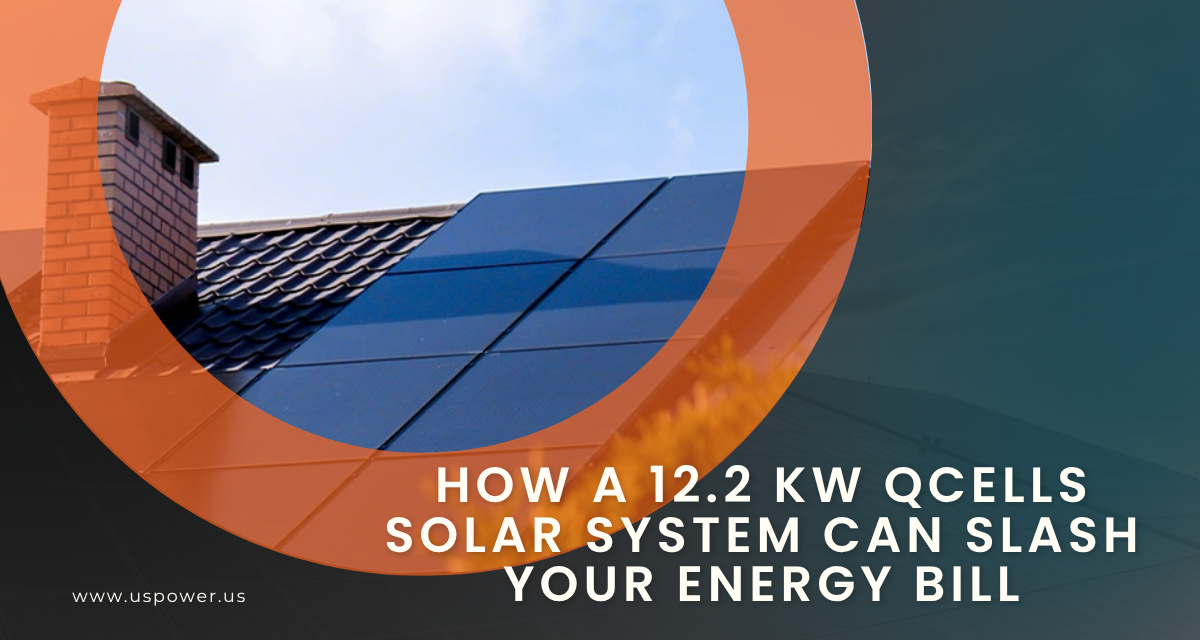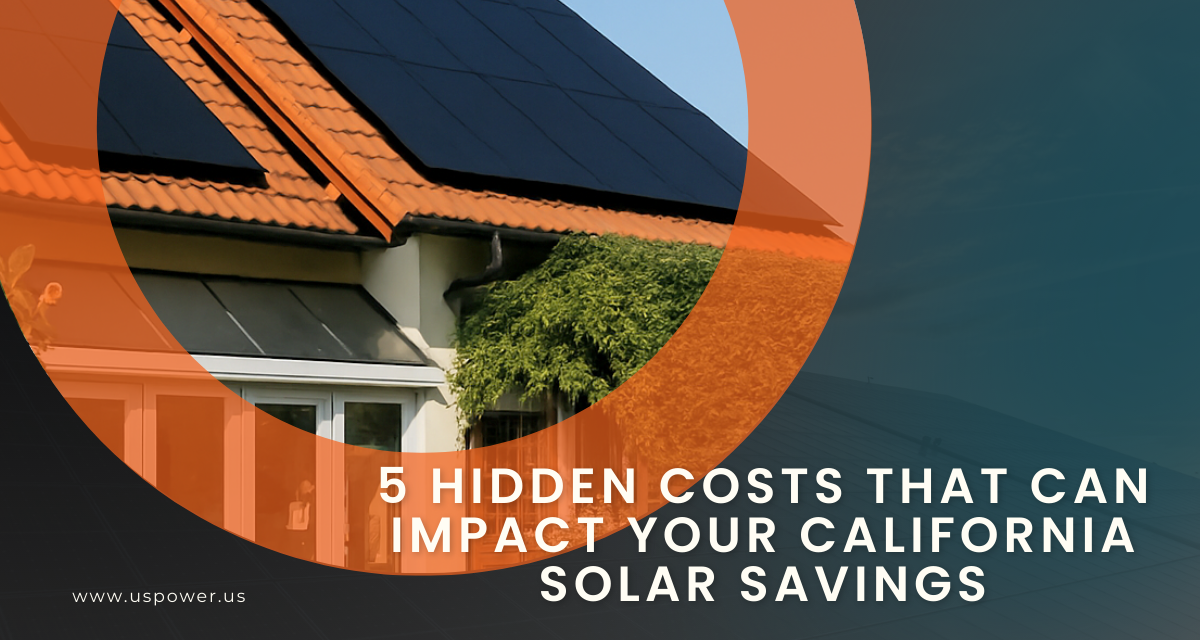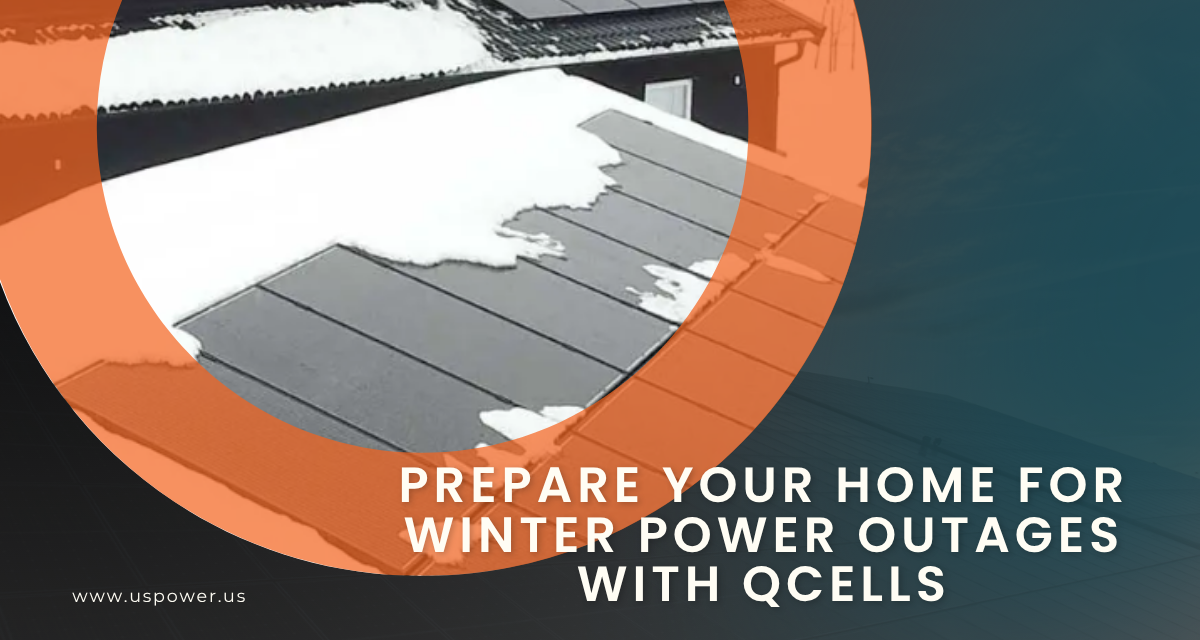Your Solar Dream Doesn't Have to Turn Into a Nightmare

Solar and Roofing Advisor
Prevent solar bankruptcy nightmares. Expert guide reveals why installers fail, red flags to watch, and how to select trustworthy QCells solar direct partners.

If you've browsed solar forums lately, you've probably seen heartbreaking stories like this: A Southern California homeowner does everything right. They check Google reviews, vet salespeople, schedule tech visits—everything goes smoothly. Then silence. Missed deadlines. Vague emails about "one more payment." Finally, the company vanishes. Another family's savings lost, another solar dream deferred.
This scenario is tragically common. Over 100 solar companies have gone bankrupt or shut down operations since 2023, leaving thousands of homeowners stranded without installations, warranties, or recourse. In 2025 alone, household names like SunPower, Titan Solar Power, and more have imploded under financial pressure. For many people considering solar, these cautionary tales are enough to kill their enthusiasm entirely.
But here's the truth: The problem isn't solar technology—it's choosing the wrong installer. And that's exactly what we're going to fix today.
Why So Many Solar Companies Are Going Bankrupt Right Now
Before we talk about solutions, it's important to understand why this crisis is happening in the first place. The solar industry is experiencing a perfect storm of financial pressures that have devastated companies across the board.
Rising Interest Rates Killed the Business Model
When the Federal Reserve aggressively raised interest rates to combat inflation, it created a domino effect throughout residential solar. Higher interest rates made solar loans significantly more expensive for homeowners, reducing demand just as companies had scaled up their operations. According to EnergySage's 2023 Solar Marketplace Intel Report, average monthly payments increased by 13% year-over-year. For cash-strapped solar companies already operating on razor-thin margins, this demand collapse was catastrophic. Smaller contractors, lacking the financial reserves of larger corporations, couldn't survive the downturn.
The Federal Tax Credit Expiration Created a Cliff
For years, homeowners could claim a 30% federal tax credit on solar installation costs—that's roughly $7,500 off a $25,000 system. This incentive was the backbone of the residential solar business model. But in July 2025, Congress passed the One Big Beautiful Bill Act, which abruptly terminated the 30% residential solar tax credit effective December 31, 2025. There's no phase-down period. No extensions. After this year, customer-owned residential solar systems won't qualify for any federal tax credit.
This single policy change has thrown the entire industry into crisis mode. Sunnova and Mosaic, both massive players, cited the threat to federal tax credits as a primary reason for their bankruptcies. Smaller installers are facing a choice: pivot quickly or go under.
Learn more about how changing solar policy affects your savings timing.
Supply Chain Issues and Tariffs Squeezed Margins
Global supply chain disruptions, trade disputes, and tariffs on imported solar panels from China, Malaysia, and Vietnam have driven up hardware costs across the board. Simultaneously, permitting delays and labor shortages have increased soft costs. These pressures combined have created an impossible situation for many installers: rising costs, falling demand, and shrinking profit margins.
The result? Companies rushed to cut costs, often by cutting corners. Some started subcontracting installations to unknown third parties. Others used lower-quality materials. And many simply couldn't maintain adequate cash flow to complete projects before going under.
The Industry's Fundamental Problem: Size and Greed
Here's something the solar industry doesn't like to admit: The biggest companies created their own destruction through aggressive expansion and poor financial management.
National solar chains like Sunnova and Titan Solar grew through rapid acquisition and nationwide dealer networks. This gave them massive scale but also massive overhead. They relied heavily on debt financing to fuel growth, betting that the good times would continue forever. When interest rates spiked and demand dropped, they couldn't adapt. Their business model depended on high volume and thin margins—exactly the wrong foundation for surviving industry downturns.
As one industry expert put it: "The problem with solar, isn't solar; it's the company you go with."
Meanwhile, smaller, locally-based installers have weathered these storms far better. Why? Because their business model is fundamentally different. They focus on doing excellent work, building community relationships, and maintaining strong profit margins rather than chasing unsustainable growth.
Red Flags That Predict Solar Company Failure
If you're shopping for a solar installer, these warning signs should immediately disqualify a company:
1. Too Good to Be True Promises
If a company promises you'll save 70% on electricity costs without conducting a thorough energy audit, or guarantees a system will be installed in days, walk away. Legitimate installers provide realistic, data-driven projections specific to your home.
2. Aggressive High-Pressure Sales Tactics
Door-to-door salespeople, threats to cancel offers if you don't sign immediately, scare tactics about rising electricity costs—these are classic tactics used by unstable companies trying to maximize sales volume.
3. No Clear Warranty or Financing Transparency
Avoid any contractor who doesn't provide both product warranties (25-year panel warranties) AND workmanship warranties (typically 10-20 years). Also be wary of companies that can't clearly explain their financing terms or hide fees in fine print.
4. No Local Presence or Track Record
Companies that operate nationwide through subcontractors often have inconsistent quality and higher overhead costs. They may not understand local permitting processes, utility interconnection requirements, or Southern California's specific incentive programs.
5. Vague or Missing Documentation
Legitimate companies provide detailed written quotes, comprehensive contracts, and clear warranty documentation. If they dodge your questions or fail to provide paperwork, it's a major red flag.
6. Licensing and Certification Issues
Check the California Contractors State License Board to verify your installer's license status. Also look for NABCEP certification (North American Board of Certified Energy Practitioners)—this is the gold standard for solar professionals and indicates rigorous training and expertise.
7. No Proven Financial Stability
Research the company's financial health. How long have they been in business? Do they have strong local reviews? Can they provide references from customers whose systems have been installed for 5+ years? Companies in financial trouble often disappear mid-project.
Discover the specific red flags that predict solar company problems before you sign—and how to protect yourself.
What Makes a Trustworthy Solar Installer
So what separates reliable solar companies from fly-by-night operations? Here are the critical markers:
Local Roots and Long-Term Thinking
The best solar installers are rooted in their communities. They have a direct stake in maintaining their reputation because they depend on referrals and long-term customer relationships. They're not trying to maximize short-term profits—they're building a business they can sustain for decades.
Quality Materials and Components
Reputable installers use tier-one solar panels and batteries, not the cheapest options available. They can clearly explain the specifications of every component in your system and why they chose them. QCells solar panels, for example, deliver above-average efficiency ratings of 19.6% to 21.2%, which means better performance in all conditions, including Southern California's variable weather.
Comprehensive Warranties
Look for installers offering both product warranties (typically 25 years on panels) and workmanship warranties (ideally 10-20 years). Some premium installers even offer production guarantees—promising your system will deliver a certain amount of energy and compensating you if it falls short.
Transparent Pricing and Financing
The best installers are upfront about costs, explain every line item in your quote, and don't use aggressive financing tactics. They should clearly outline how federal tax credits, state incentives, and local rebates apply to your specific situation.
NABCEP Certification and Professional Development
NABCEP-certified installers have demonstrated comprehensive knowledge through rigorous training and examination. They understand PV system design, installation, maintenance, inspection, and local building codes. Certification requires continuous education to maintain—meaning certified installers stay current with industry best practices.
Strong Customer Service Infrastructure
After installation, you need reliable support. The best installers maintain active operations and maintenance teams, offer remote monitoring, and respond promptly to service requests. They understand that solar is a 25-30 year investment that requires ongoing support.
Factory-Direct Partnerships
Companies with exclusive partnerships with premium manufacturers like QCells can often provide better pricing and priority support. These partnerships indicate that the manufacturer trusts the installer to deliver quality work.
The Case for Local Solar Installers in Southern California
A 2021 study by the National Renewable Energy Laboratory (NREL) found that local solar installers quoted lower prices than national chains 70% of the time. On average, national companies charge about 10% more for installations. Why the premium? Higher overhead costs, reliance on expensive subcontractors, and pricing structures designed to maximize profit rather than pass savings to customers.
Local installers also provide significant advantages in permitting and interconnection. Southern California utilities and municipalities each have their own specific requirements, timelines, and quirks. A local installer navigates these bureaucratic mazes routinely and knows exactly which documents different authorities require. This expertise prevents the permit delays that plague installations from companies unfamiliar with local processes.
Perhaps most importantly, local installers are available when you need support. If something goes wrong after installation, you're not waiting weeks for a response from a national call center. You're working directly with the team that installed your system, often within days.
Southern California Solar Incentives You Need to Know (November 2025)
The expiration of the federal 30% tax credit after December 31, 2025 is huge, but it's not the only financial incentive available to Southern California homeowners. Here's what you should know:
Federal Solar Tax Credit – Act Now (Deadline: December 31, 2025)
The 30% Residential Clean Energy Credit is the single largest financial incentive available. To qualify, your system must be fully installed and operational before the end of 2025. This is not a deadline you can extend or negotiate around. If you're serious about solar, installation must happen this year. Get the complete breakdown of how the 30% federal solar tax credit works and who qualifies.
California Property Tax Exclusion
Solar installations don't trigger property tax reassessment in California. This means your home's value increases from the solar system without increasing your property taxes—a significant long-term benefit.
Self-Generation Incentive Program (SGIP)
If you install a battery storage system alongside your solar panels, you qualify for rebates of $150-$1,000+ per kWh of battery capacity, depending on your utility and income qualification. For a 10 kWh battery system, this could mean $2,000-$10,000 in home battery rebates.
Utility-Specific Rebates
Some Southern California utilities offer additional incentives. For example, SMUD provides rebates for battery installations, while certain LADWP programs offer rooftop rental agreements.
Equity Programs
The California Public Utilities Commission has allocated $280 million in new funding for the Residential Solar and Storage Equity program. Homeowners making less than 80% of Area Median Income may qualify for rebates covering most or all installation costs.
The key point: These incentives won't replace the federal credit, but they can still save you thousands. A legitimate installer will help you navigate all available programs and ensure you capture every dollar you're eligible for.
Why Battery Storage Matters Now More Than Ever
Adding battery storage to your solar system might seem like an optional luxury, but in 2025, it's becoming essential—especially in Southern California.
Energy Independence During Grid Failures
California has experienced increasingly frequent power outages due to grid strain and extreme weather. Battery storage ensures your home keeps running when the grid goes down. You're not relying on utility company promises to keep the lights on.
Peak Shaving and Time-of-Use Optimization
Southern California utilities charge significantly higher rates during peak demand hours (typically 4 PM – 9 PM). Battery storage lets you shift your consumption: use free solar energy during the day, store excess in batteries, and draw on stored energy during expensive peak hours. For some households, this alone can reduce electricity bills by 20-30%.
Qualifying for Additional Incentives
As mentioned above, adding battery storage opens the door to SGIP rebates and other state incentive programs. The rebates often cover 30-50% of battery costs, making storage a much smarter investment than it was even two years ago.
Future-Proofing Your Home
Whether electricity rates continue climbing or grid reliability continues declining, battery storage protects your long-term interests. It's an investment in resilience.
Why QCells Panels Are the Smart Choice for Southern California
If you're going to make a solar investment, you want the most reliable, efficient panels available. QCells deserves serious consideration.
Above-Average Efficiency for All Conditions
QCells panels deliver efficiency ratings of 19.6% to 21.2%—above the industry average. This means better power output per square foot, which is especially valuable in Southern California where roof space may be limited. The panels also perform exceptionally well in cloudy or low-light conditions thanks to Q.ANTUM technology.
Superior Durability and Reliability
QCells panels incorporate anti-PID (potential induced degradation) and anti-LID (light-induced degradation) technologies to prevent common efficiency losses. They undergo more rigorous testing protocols than many competitors, resulting in fewer manufacturer defects and performance issues.
Exceptional Weather Resistance
For Southern California homeowners, QCells panels are particularly valuable because they handle heat, wind, and extreme weather better than most competitors. They have excellent snow and wind load ratings, making them ideal for coastal areas or regions prone to high winds.
Outstanding Warranty Coverage
QCells offers a 25-year performance warranty guaranteeing panels will retain at least 87.2% of their original efficiency. Combined with a strong product warranty, this provides genuine peace of mind.
American-Made Production
QCells operates fully-integrated manufacturing facilities in the United States, including a major factory in Cartersville, Georgia. Choosing QCells supports American manufacturing and ensures your panels were built to the highest domestic quality standards.
What to Look for in Your Solar Contract
Before you sign anything, make sure your contract clearly includes:
System Specifications
Exact panel model, quantity, inverter specifications, battery capacity (if included), and placement details. Vague descriptions give the installer wiggle room to substitute cheaper components later.
Complete Pricing Breakdown
Equipment costs, labor, permitting fees, interconnection fees, and financing terms—all spelled out clearly with no hidden charges.
Warranty Details
25-year product warranty on panels, equipment warranties on inverters and batteries, and workmanship warranty covering installation labor. Get the exact terms in writing, not vague promises.
Performance Guarantees (if offered)
Some installers guarantee minimum system production. If your system underperforms, they'll troubleshoot and fix problems at no cost.
Timeline and Contingencies
Expected installation date, permitting timeline, and what happens if delays occur. What are your protections if the company misses deadlines?
Financing Terms
If financing, the exact interest rate, monthly payment, loan term, and any early payoff penalties. Don't accept verbal promises or paperwork that's unclear.
Maintenance and Support Terms
What happens after installation? Is remote monitoring included? How quickly will the company respond to service requests?
Why the End of 2025 is Your Last Chance
This bears repeating because it's so important: The 30% federal solar tax credit expires December 31, 2025. After that date, the credit vanishes entirely for customer-owned residential systems. There's no phase-down, no extensions, and no second chances.
For most homeowners, this 30% credit is worth $6,000-$8,000 on a typical installation. Losing it means solar becomes roughly one-third more expensive. And with rising electricity costs across Southern California—especially during peak demand hours—solar's financial case only gets weaker without this incentive.
The calendar is working against you. Installers are swamped with customers trying to beat the December 31 deadline. If you're serious about solar, the time to act is now—not next spring, not after you "do more research." The window is closing.
How to Choose Your Solar Installer: A Step-by-Step Process
Step 1: Create a Shortlist Based on Local Reviews
Start with Google and Yelp reviews from actual Southern California customers. Look for installers with:
- 4.5+ star ratings across multiple platforms
- Detailed positive reviews mentioning quality, responsiveness, and reliability
- Long operating history (5+ years minimum)
- Willingness to provide customer references
Step 2: Verify Licensing and Certifications
Check the California Contractors State License Board to confirm the company holds a current license. Look for NABCEP certification—this is the industry gold standard.
Step 3: Request Detailed Written Quotes
Get at least 3 quotes and compare them thoroughly. Watch for:
- Which companies explain what they're quoting (specific panel models, inverter types, battery capacity)
- Which companies provide realistic timelines and warranty terms
- Which companies clearly explain available incentives and how they apply to your situation
Step 4: Interview the Company
Call and ask these questions:
- How long have you been operating?
- Do you install these systems yourself or subcontract?
- What happens if you go out of business? (Legitimate companies should have workmanship insurance)
- Can you provide references from customers with systems installed 5+ years ago?
- What's your warranty policy if the panels underperform?
- How do you stay current with changing regulations and technology?
Step 5: Trust Your Gut
If something feels off about a company—aggressive sales tactics, vague answers, pressure to sign quickly—listen to that instinct. The best solar companies build trust through transparency and expertise, not pressure and promises.
Step 6: Check Financial Stability
Look up the company's business history. Are they growing sustainably or rapidly expanding? Do they have strong capital backing? Have they been involved in lawsuits or regulatory issues? Financial stability is a strong predictor of whether they'll be around to support your system in 5, 10, and 25 years.
Ready to Go Solar the Right Way?
The solar industry crisis is real. Companies are going bankrupt. Homeowners are being stranded. But that doesn't mean you should give up on solar—it means you need to be smart about choosing your installer.
Local, financially stable companies with strong reputations, transparent pricing, quality components, and comprehensive warranties are your protection against industry chaos. They've survived previous downturns and will survive future ones because their business model is based on doing excellent work, not chasing unsustainable growth.
The 30% federal tax credit is disappearing in 44 days (as of November 2025). Solar remains one of the best investments you can make for energy independence, grid resilience, and long-term savings. But only if you choose the right installer.
Don't become another tragedy story. Do your homework. Check credentials. Get multiple quotes. Ask tough questions. And choose a company that's been serving your community for years and plans to be here for the next 25 as your solar system generates clean energy and savings.
If you're looking for a trustworthy solar installer in Southern California, US Power delivers the reliability and expertise that separates us from the industry's troubled players. We've been serving Southern California homeowners with premium QCells solar panels, battery storage, and personalized service. Our exclusive partnership with QCells means factory-direct pricing and American-made components you can trust.
Don't wait until December 31, 2025. Your window to capture the 30% federal tax credit is closing. Contact US Power today for a free consultation and detailed quote—no pressure, no aggressive sales tactics, just honest expertise and transparent pricing.
Artículos relacionados
Nuestros blogs relacionados
Energy savings with high-efficiency Qcells solar panels. Go Solar Now with US Power!
Avoid hidden solar costs—see what California homeowners should plan for in 2025.
Avoid winter outages—learn how solar + battery keep your home powered with US Power.
Nuestros socios de marcas de energía solar y techos








Empoderamos a las comunidades y las empresas para que aprovechen las energías limpias y renovables energía solar soluciones que impulsan el crecimiento sostenible.
Derechos de autor © 2025 US POWER | Energía solar y techosUS Power - Axia by QCells. All Rights Reserved.
La privacidad es importante para nosotros, por lo que tiene la opción de deshabilitar ciertos tipos de almacenamiento que pueden no ser necesarios para el funcionamiento básico del sitio web. El bloqueo de categorías puede afectar a su experiencia en el sitio web.
Imprescindible
Estos elementos son necesarios para habilitar la funcionalidad básica del sitio web.
Personalización
Estos elementos permiten que el sitio web recuerde las elecciones que ha realizado (como el nombre de usuario, el idioma o la región en la que se encuentra) y proporcionan funciones mejoradas y más personales.
Mercadeo
Estos artículos se utilizan para ofrecer publicidad que sea más relevante para usted y sus intereses.
Analítica
Estos elementos ayudan al operador del sitio web a comprender cómo funciona su sitio web, cómo interactúan los visitantes con el sitio y si puede haber problemas técnicos.
Nosotros y nuestros socios externos utilizamos cookies y otras tecnologías para mejorar y rastrear su experiencia en este sitio, realizar análisis y personalizar el marketing para usted. Al usar el sitio, aceptas que usemos estas tecnologías, incluido el registro y el monitoreo de tus interacciones con el sitio.
¡Obtenga una estimación solar instantánea usando el satélite!











